Life Experience: A week of eating convenience store food from Cheers, 7-Eleven
Sign up now: Get ST's newsletters delivered to your inbox
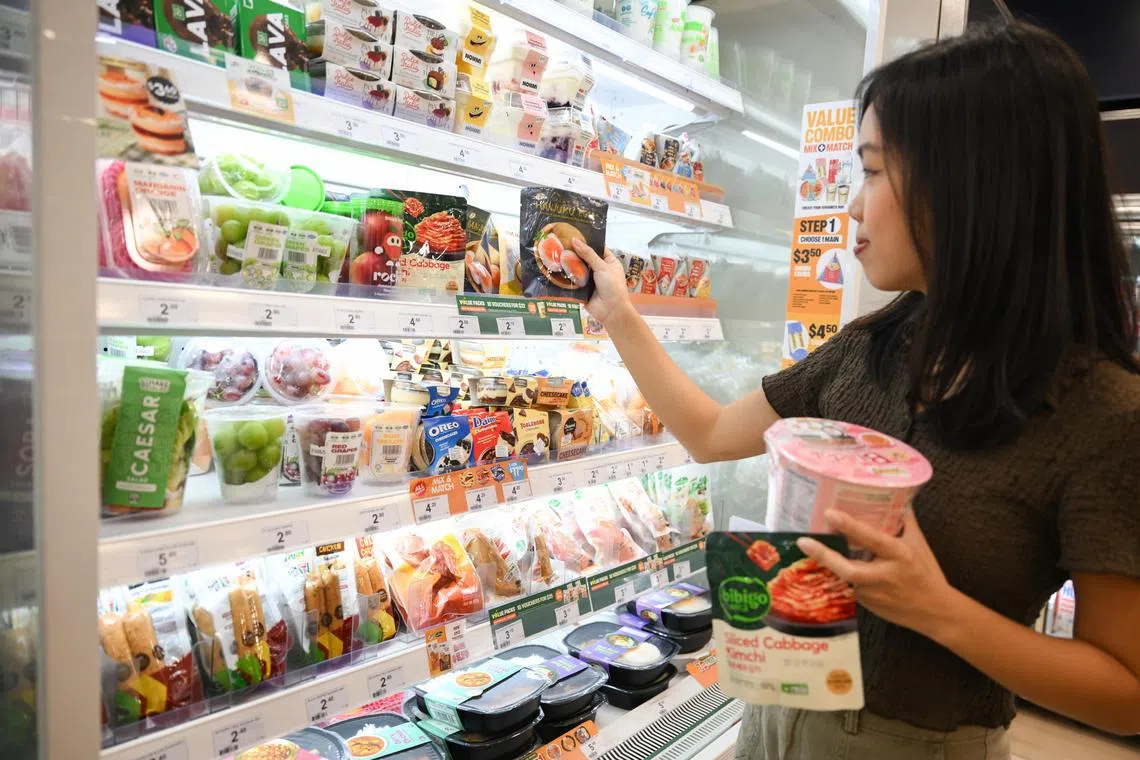
The writer picking out convenience store meals at the 7-Eleven outlet at Newton MRT station.
ST PHOTO: SHINTARO TAY
Follow topic:
SINGAPORE – I know, I know. Worst idea ever.
What can I say? I was seduced by the romance of the convenience store, those fluorescent mystery boxes, described in Japanese author Sayaka Murata’s award-winning novel, Convenience Store Woman, as “not merely a place where customers come to buy practical necessities”, but also “somewhere they can enjoy and take pleasure in discovering things they like”.
In other words, a place of self-discovery. Perhaps that is why so many content creators flock there, driven by the same compulsion to spend the next 24 hours eating their way through shelves upon shelves of ramen, instant meals, biscuits, chips and chocolates galore, buoyed by the hope of stumbling upon a nugget of gold – maybe a fried chicken cutlet, juicier than it needs to be, or an ice cream sitting at the bottom of the freezer, patiently waiting for its close-up.
Videos of such escapades are typically filmed in Japan or South Korea, countries that have turned these everyday pit stops into tourist attractions with their impressive array of produce: some fresh, some less so, but still reportedly delicious.
In Singapore, however? Well, let’s just say that 7-Eleven and Cheers are rarely anyone’s first choice for lunch or dinner.
It is tough, after all, when convenience stores have to tussle in the same price bracket as hawker centres – a hurdle the 7-Eleven team is well aware of.
“A pretty unique challenge about Singapore is that few markets in this world have this sort of prevalence of fresh food every few steps, like we do with our hawker centres. So, it is pretty competitive, because it’s hard to compete directly with absolutely freshly made food at a similar price point,” says Ms Anushree Khosla, managing director of 7-Eleven Singapore.
She is under no illusions about what 7-Eleven brings to the table, “We’re not trying to give you the best chicken rice. We’re trying to give you food you wouldn’t normally go to a hawker centre to eat.”
That means sandwiches, wraps, mac and cheese, onigiri, rice bowls, instant noodles from South Korea; and snacks from Japan. No yakitori or whipped-cream sandwiches yet, though; food safety regulations make the importing of chilled Japanese produce tricky.
Still, Ms Khosla thinks the chain, which now has more than 460 stores in Singapore, has done pretty well for itself. Over the years, it has experimented with all sorts of cuisine, pumping out four to six new ready-to-eat offerings each month.
Some did not land as well – an ambitiously priced lobster spaghetti ($16.80), for instance, has been consigned to the attic of lessons learnt – while others, like the popular butter chicken briyani, introduced in 2012, are now mainstays.
“We have been on this journey to evolve from a last-minute choice to a credible destination for food. And while, of course, we’re not Japan yet, I think we’ve made significant progress for now,” says Ms Khosla.
Hot on 7-Eleven’s heels is Cheers, which stocks its version of ready-to-eat meals. Each new item on the shelf undergoes a long research and development process that can stretch from five months to a year.
The team starts by researching what customers want and need, before calling in suppliers and colleagues to understand current eating habits, dietary requirements and specific conveniences.
Next comes prototyping, followed by testing – “rigorous and repeated”, according to Ms Karen Ong, general manager of Cheers, FairPrice Group.
“Only after these criteria are thoroughly satisfied and the products are approved do we schedule them for production and launch,” she says.
Given the thought that goes into making sure these meals match up to the rest of Singapore’s gustatory landscape, I thought I would give them a fair shot, just to see if I was missing anything.
There may very well be untapped potential hidden on 7-Eleven or Cheers’ shelves. And supermarket dining seems to be all the rage these days, so a little convenience-store renaissance might be in order too.
The experiment
My goal for the week is to keep my hair and my waistline.
So, I call up Ms Charlotte Mei, a freelance nutritionist who knows a thing or two about healthy eating – just look at the recipes on her eponymous blog.
Her advice is to get enough fibre and protein – pair a microwaved meal with a fruit, perhaps, or a salad. Smoothies might be a good option, too. Also, look for sandwiches with protein like chicken, tuna or eggs, rather than those packed with processed meat.
I resolve to start my week with a Smooder smoothie, Singapore’s version of the viral blends from 7-Eleven Japan. Unfortunately, they are available only at select 7-Eleven stores, none of which are near my office, forcing me to settle for a packet of Chobani yogurt instead for breakfast.
From the same store, I pick up a sandwich for lunch – egg and cheese, because I am still hoping to find traces of 7-Eleven Japan and its famed tamago sando in Singapore – as well as a butter chicken briyani and vacuum-packed corn on the cob for dinner. That makes three meals settled at one go for around $15. Talk about convenience.
I end up heading out again anyway, because my colleagues’ Monday bubble tea run has become something of an office staple. This week, though, I eschew my usual chrysanthemum milk tea for a DIY version cobbled together from the Cheers a couple doors down: $4.35 gets me a bottle of Meiji milk, Yeo’s chrysanthemum tea and some grape gummies I use as a substitute for pearls.
I try to spy on the Koi barista as he assembles my colleague’s order, but he is giving nothing away, so I agar-agar my way to glory until my concoction matches the colour of the original. It’s all right. A bit thin and not nearly as caramelised nor as robust as the Koi version. I save nearly $2, but at what cost?
I pair the drink with my egg sandwich ($3.50). It is tasty enough and definitely packed with protein, though I doubt people are going to try recreating this at home any time soon.
Later in the week, I help the sandwich upskill by stuffing a chicken cutlet from the hot food section between the two slices of eggy bread.
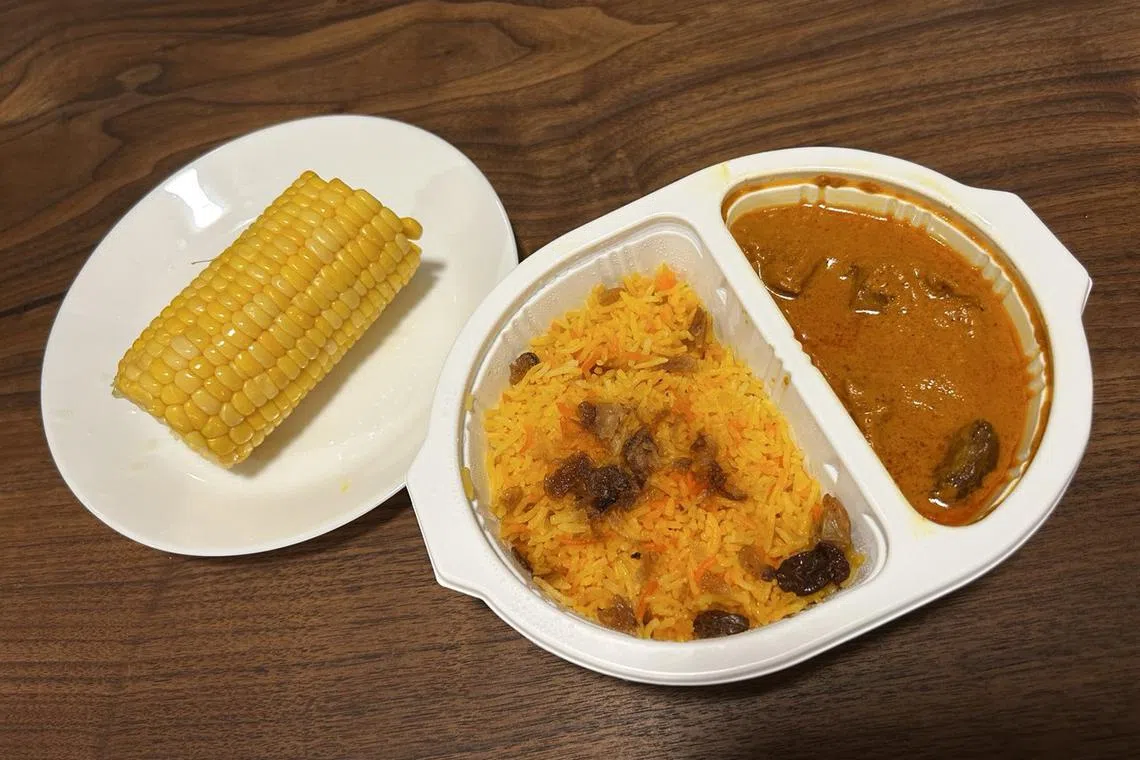
Corn and butter chicken briyani from 7-Eleven.
ST PHOTO: CHERIE LOK
The butter chicken briyani ($4.80) I get for dinner is a touch more impressive, packing a respectable punch and four pieces of surprisingly tender chicken. It does not quite have the tomato-y tang of the butter chicken I am familiar with, but I see how it became a cult favourite.
Day 2, and I should probably start getting some fibre into my body. The 7-Eleven team sends me a list of outlets with hot food and a blender, and I make a detour to the one at 313@somerset. It sort of defeats the purpose of a convenience store – it is supposed to find you, rather than the other way around – but I must and will have my smoothie today.
Success! A fridge, stocked with a rainbow of frozen fruit cups, beckons. Options, mostly $4.50, range from GoGreen – the healthiest-looking combination of pineapple, mango, oats, spinach and yogurt – to Strawnana, the safe bet: strawberry, banana and yogurt.
No extra sugar is added, so I’m feeling rather proud of myself as I cart the Smooder Strawnana and a soba salad ($5.90) to the cashier. A packet of chicken breast ($3.10) is thrown in too, for protein. My friend’s American boyfriend once described the latter as his favourite dish in Singapore, and I need to know if I was justified in writing him off for that opinion.
It is no poached chicken, but still surprisingly good. The hot and spicy flavour reminds me of Pizza Hut’s Sweet ‘N’ Spicy Drumlets but without the guilt (according to the packaging at least, which assures me it is low-fat. I am too scared to read the fine print). Who knew eating cold chicken breast out of a vacuum pack could be this satisfying?
The salad, on the other hand, is a dud. The leaves are disconcertingly brown and the soba so mushy, I give up after a few bites.
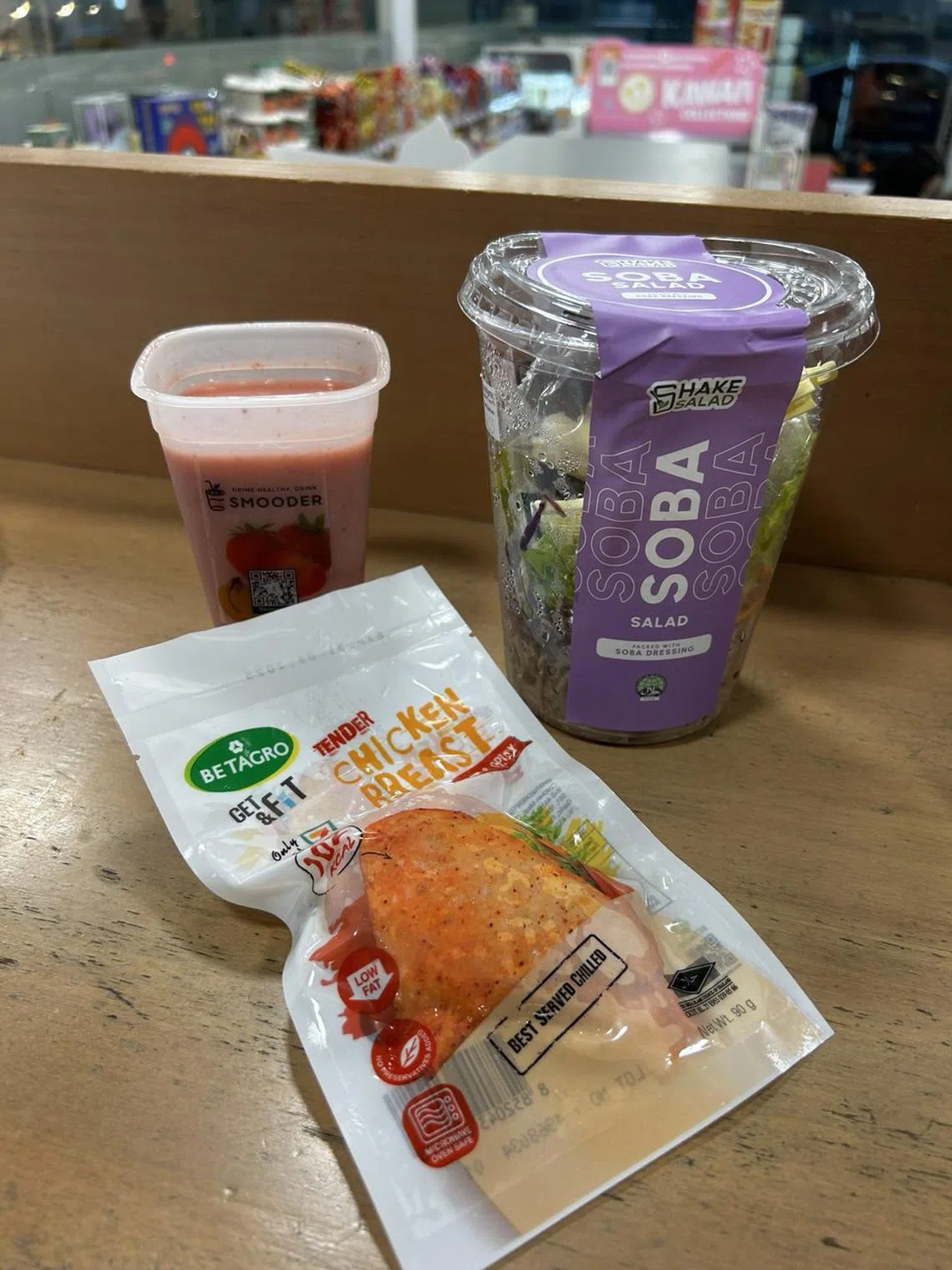
Smoothie, chicken breast and soba salad from 7-Eleven.
ST PHOTO: CHERIE LOK
I cheer myself up with a $5 Babe’s Bottle ice cream flavoured and shaped like a durian – apparently, it has gone viral on some corner of the internet – while I stroll around the store and consider the meals to come.
Wednesday’s lunch is a pizza ($5.50) I was told I should be able to eat with one hand, on the move. The clue is in its name: Go Pizza, another brand 7-Eleven has teamed up with to up its hot food game.
Dinner is no healthier: flaming mac and cheese ($4.80) I heat up in the microwave and jazz up with a sprinkle of potato chips. It has an artificial smack to it, as most ready-made meals do, but I appreciate the cheesy pull and kiss of heat.
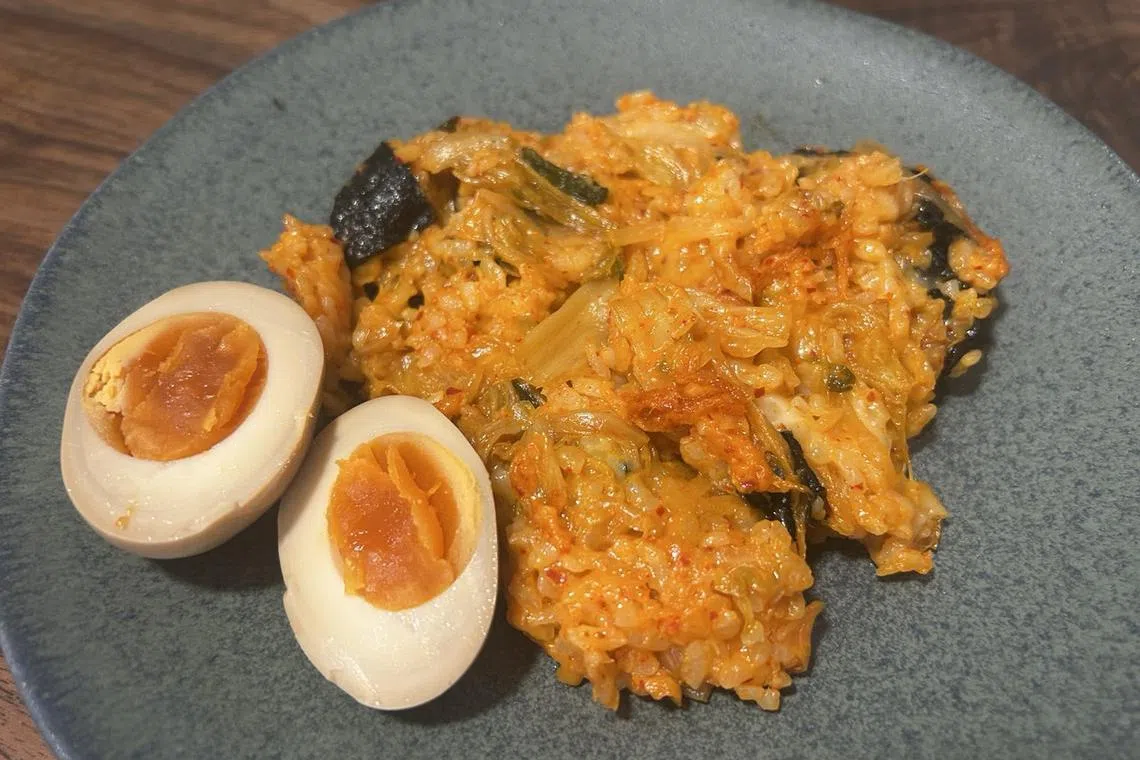
Kimchi fried rice made from convenience store ingredients.
ST PHOTO: CHERIE LOK
By Thursday, I grow weary of the microwave, so I fire up my wok and toss in a grilled salmon onigiri ($2.50), a packet of kimchi ($2) and a stick of mozzarella cheese ($1.50). It yields a plate of kimchi fried rice that I pair with a marinated egg ($2.70 for a pack of two hanjuku eggs) and savour with genuine relish. The onigiri itself is already well seasoned, so no additional soya sauce or salt is required.
Much better, in any case, than the ready-to-eat kimchi fried rice ($5), which is way too sweet and has none of the sharp funk that makes kimchi such a culinary staple.
So, 7-Eleven’s offerings are a mixed bag. But how do the two chains match up?
A few colleagues are roped into a taste test and presented with four dishes: rendang chicken with corn rice from Cheers ($5), curry chicken rice from 7-Eleven ($4.80) and two fish burgers, one from each chain (Cheers’ version costs $4.10, 7-Eleven’s costs $3.90).
7-Eleven emerges victorious in the rice set showdown, with fresher chicken, more flavourful gravy and softer rice. It also has the superior burger – nearly reminiscent of McDonald’s Filet-O-Fish, albeit still slightly depressed. And at least it is not drowning in sauce.
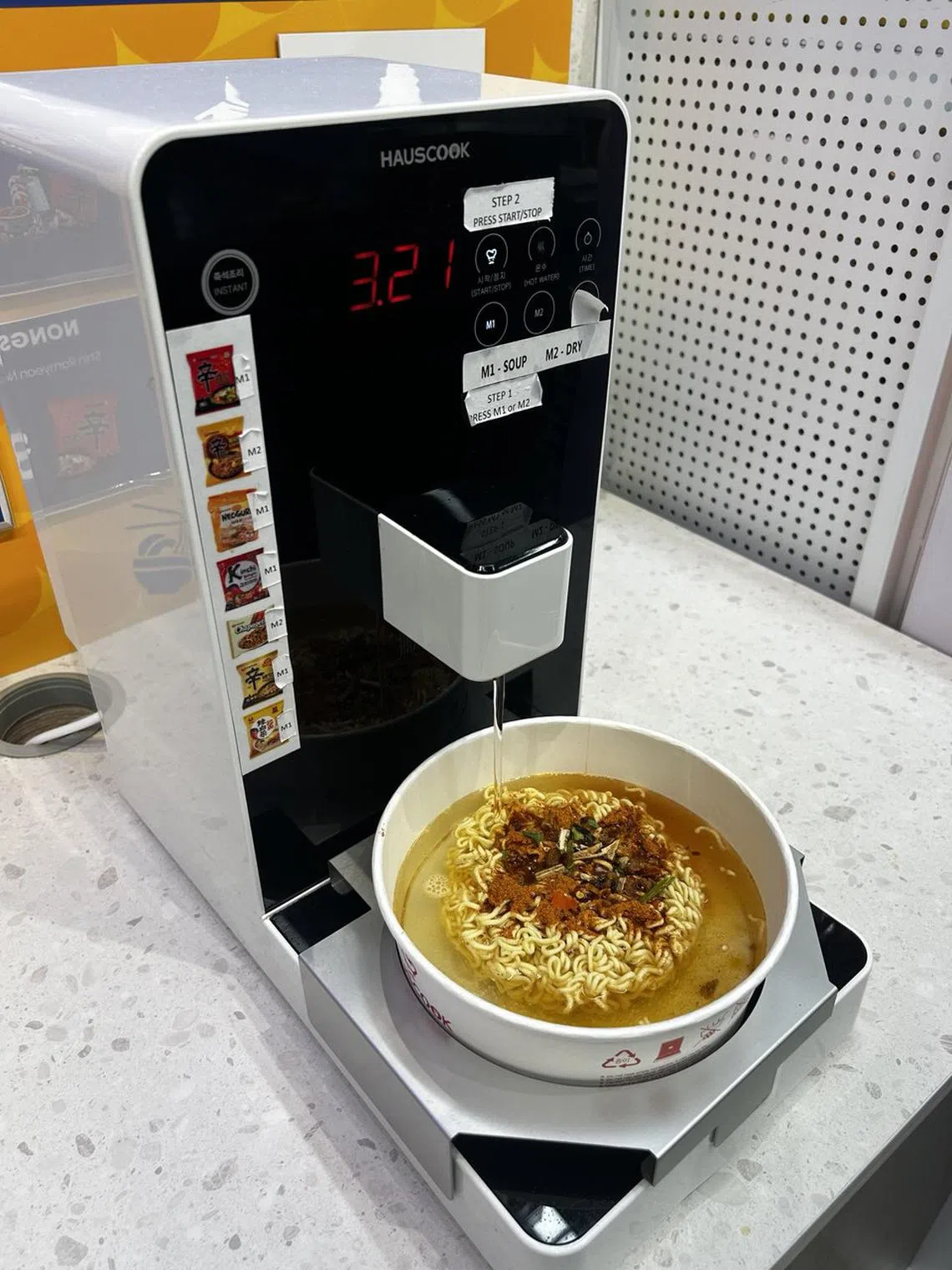
A ramen station at Cheers.
ST PHOTO: CHERIE LOK
Cheers, however, has the more exciting ramen set-up. At the Marine Terrace MRT outlet, I find an induction cooker that can boil soup through a paper bowl. It is thrilling for its novelty alone, but also has the added benefit of ensuring your noodles are cooked through.
In goes a Chinese tea egg and a mushy sausage that does not taste even remotely like real food, all washed down with a mango-banana-spinach smoothie ($5) that is thicker and better blended than the 7-Eleven option.
On Saturday, I compensate by cobbling together a tofu bowl with hanjuku eggs, kimchi and corn.
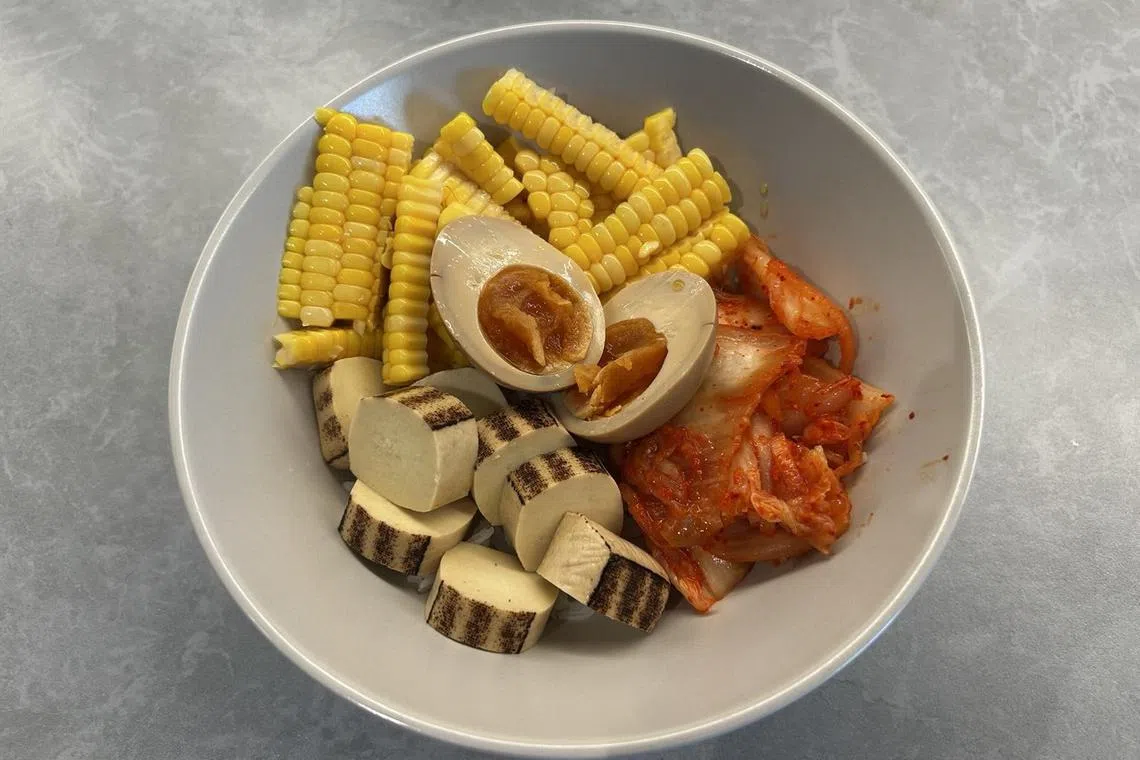
Tofu bowl with corn, egg and kimchi.
ST PHOTO: CHERIE LOK
I wind up the challenge by setting myself the goal of whipping up a three-course meal using only ingredients found in convenience stores.
The menu is a short compilation of my greatest hits over six days of ill-advised eating. It starts with chicken breast from 7-Eleven, which I bread in crushed almonds and bake in the oven. Having acquired a new coat of textural variety, it is laid on a bed of mixed greens – actually green this time, thankfully – from a Shake Salad and served.
For mains, I return to my kimchi fried rice, slightly modified this time with some cheesy sausages and three types of onigiri, turning the dish into a confused hotchpotch of tolerable, if unplaceable, flavours.
An extra serving of carbs accompanies this meal: mashed potatoes made from potato chips and milk, boiled then blended, delivering the dubious pleasure of slathering one’s tongue in congealed fat.
Dessert is an apple crumble that costs me an arm and leg, by the standards of supermarket produce. A jar of $5.50 peanut butter is acquired from Cheers, while $9 scores me four apples from 7-Eleven. A crushed oat bar from Nature Valley I bought earlier in the week forms the crumble, and Lotus biscuit crumbs double as seasoning.
There is the warmth of cinnamon and the tart bite of apple, but it is as dry as desert sand. It is only later that I realise, too late, that some 7-Eleven outlets sell butter too.
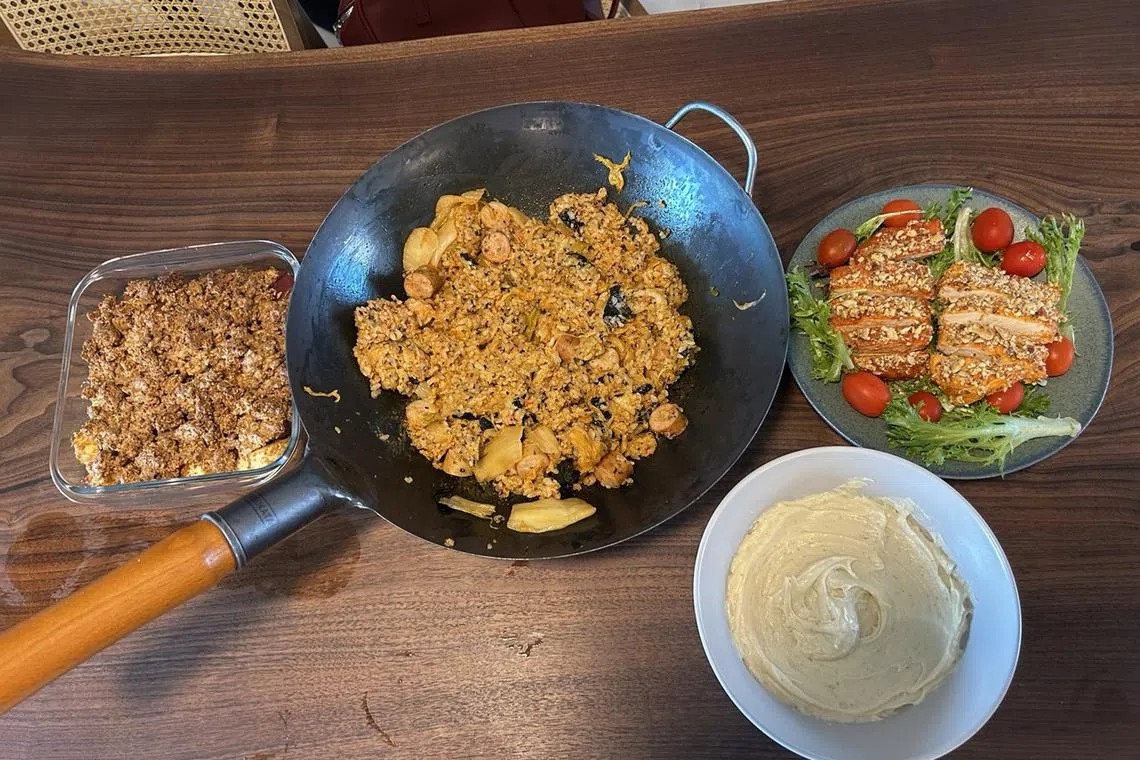
The writer’s attempt at cooking a multi-course meal from convenience store ingredients.
ST PHOTO: CHERIE LOK
The enduring relevance of the convenience store
With that, my seven days of convenience-store eating come to an eagerly anticipated end.
It might be a while before I set foot into another Cheers or 7-Eleven, but when I do, I will return for the hanjuku quail eggs, ramen station, mozzarella cheese and perhaps even the sandwiches or chicken breast on days I need a quick and filling lunch.
There are just enough ingredients for more experimental diners to get creative with their meals – instant noodles go well with kimchi and cheese, for instance, and cocktails can be mixed from bottled shots and soft drinks or flavoured milk. It also helps that most food has been apportioned into single-person packets.
Eating a balanced meal remains a challenge, however, unless one happens to be a salad devotee or content to live on a diet of corn and kimchi.
So, Singapore’s convenience stores are unlikely to gain international adulation. But that does not mean they are going anywhere.
Despite their uneven quality, Mr Jackson Ng, deputy director of Temasek Polytechnic’s School of Business, says these stores play a vital role as quick-stops for daily essentials, last-minute necessities, late-night snacks and coffee.
“While convenience stores are not always the cheapest option, Singaporeans often prioritise ease and immediacy over price. This trade-off ensures that these stores remain an integral part of the urban rhythm, seamlessly supporting the pace and lifestyle of the community,” he says.
To continue proving their relevance, he adds, convenience stores will need to adapt to both operational challenges and shifting consumer expectations.
The manpower crunch, for one – which might hamper the ability of these chains to operate around the clock or on holidays – could be solved with technology.
Plus, they may need to expand their services and keep close tabs on the needs of their immediate community, says Dr Seshan Ramaswami, associate professor of marketing education at Singapore Management University. It helps to keep up with broader consumer and food trends too.
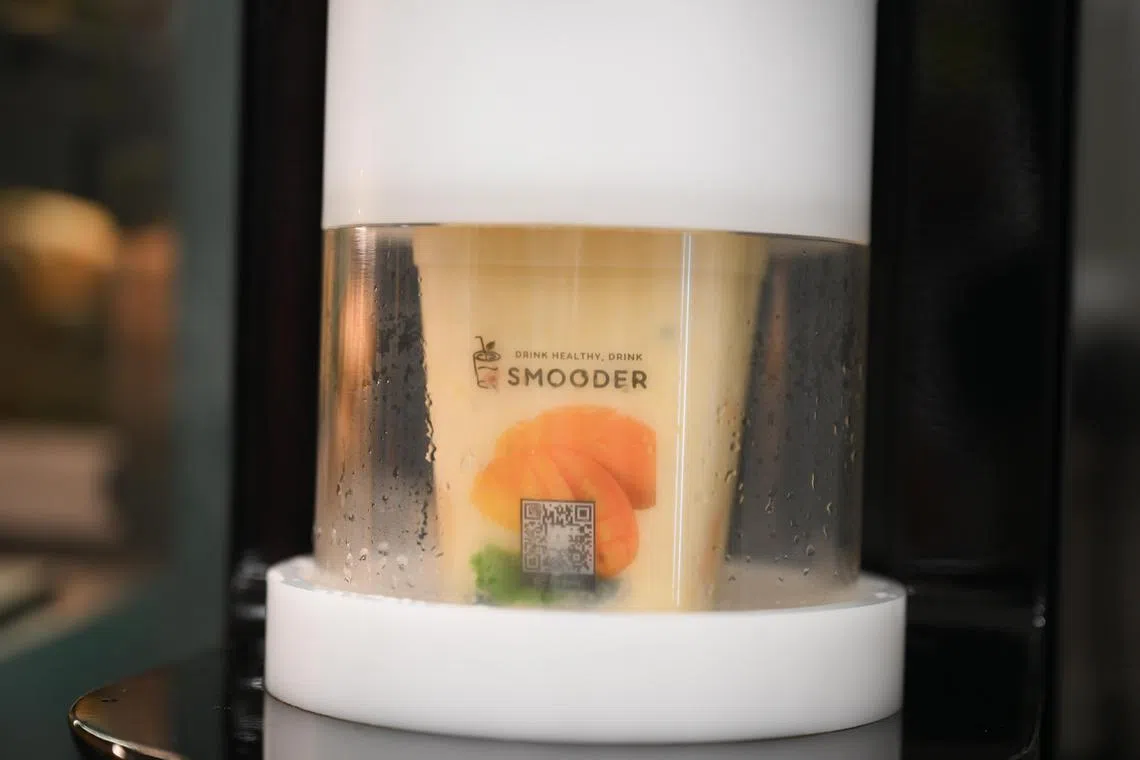
Some 7-Eleven stores now stock Smooder smoothies, which are blended on site.
ST PHOTO: SHINTARO TAY
Hopefully, on my next visit, I will find a shiny new machine dispensing freshly whisked matcha, perhaps, or hot yakitori. The smoothie machine might still be there. Or it might have been replaced by an acai maker instead.
That is the beauty of the convenience store, I suppose. You know, by and large, what you will find, but there is always something unexpected – even delicious, on occasion – waiting in the corner, ready to catch your eye.


